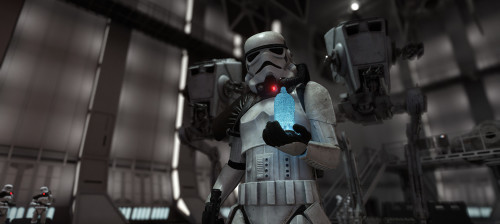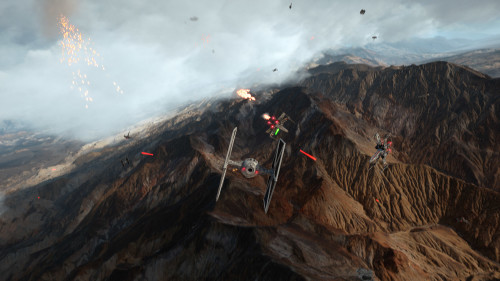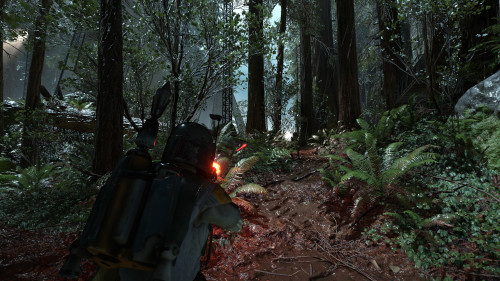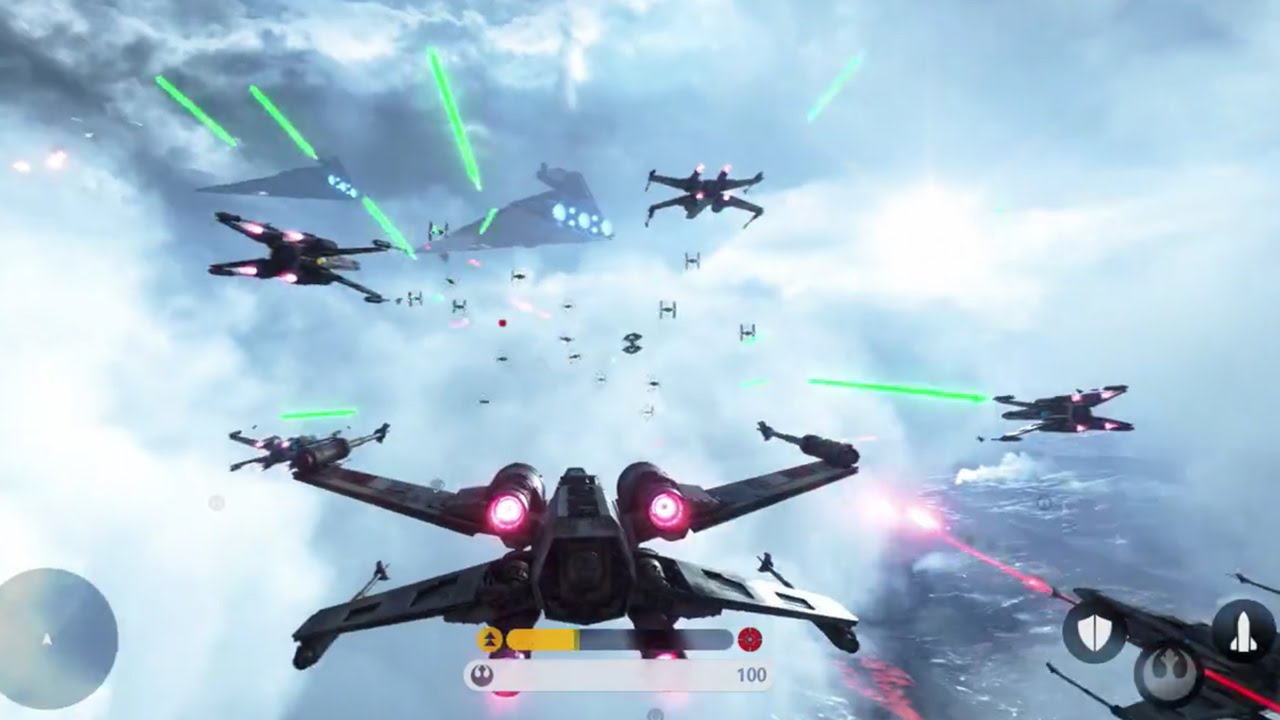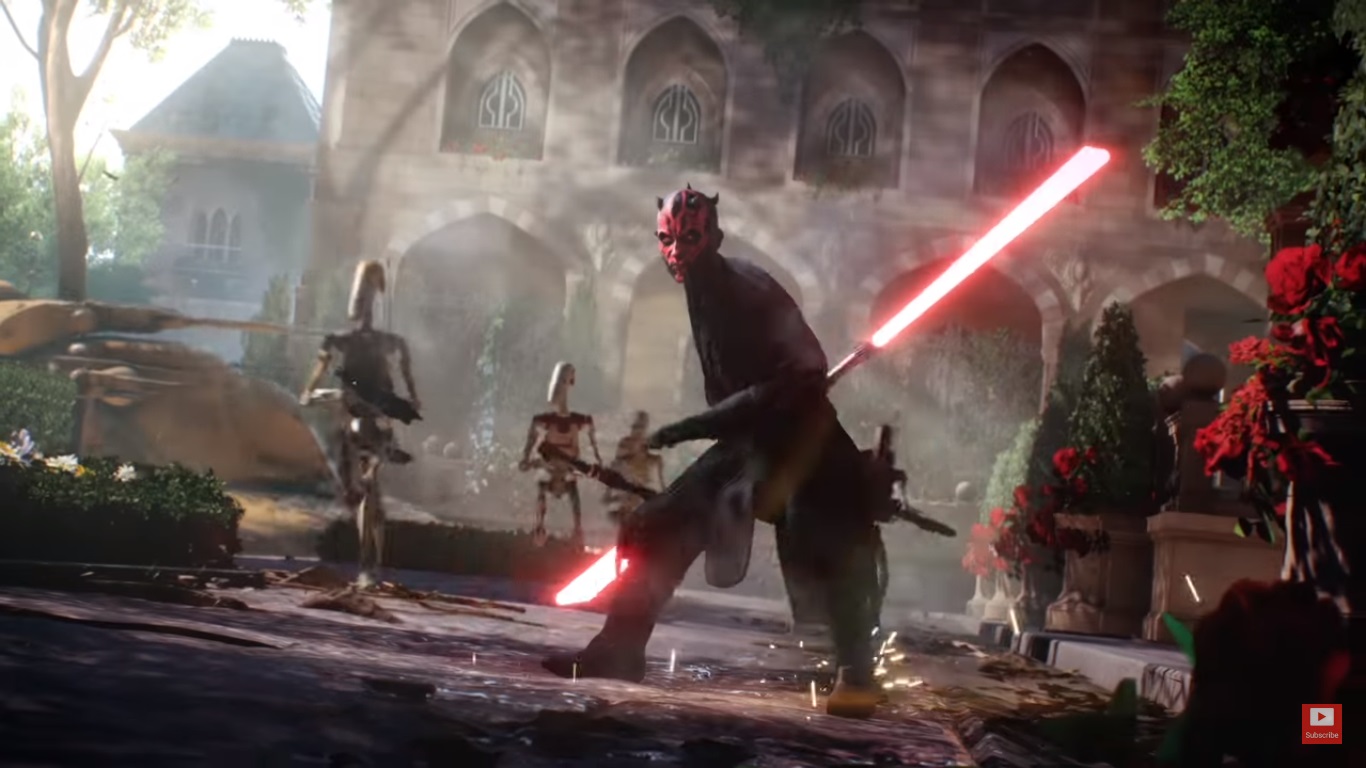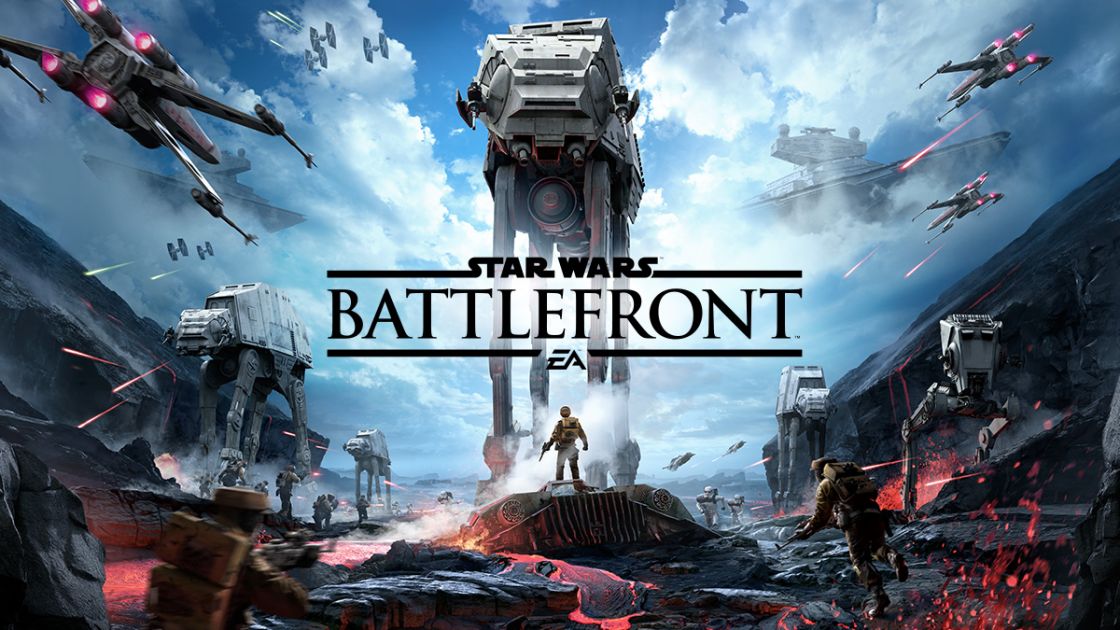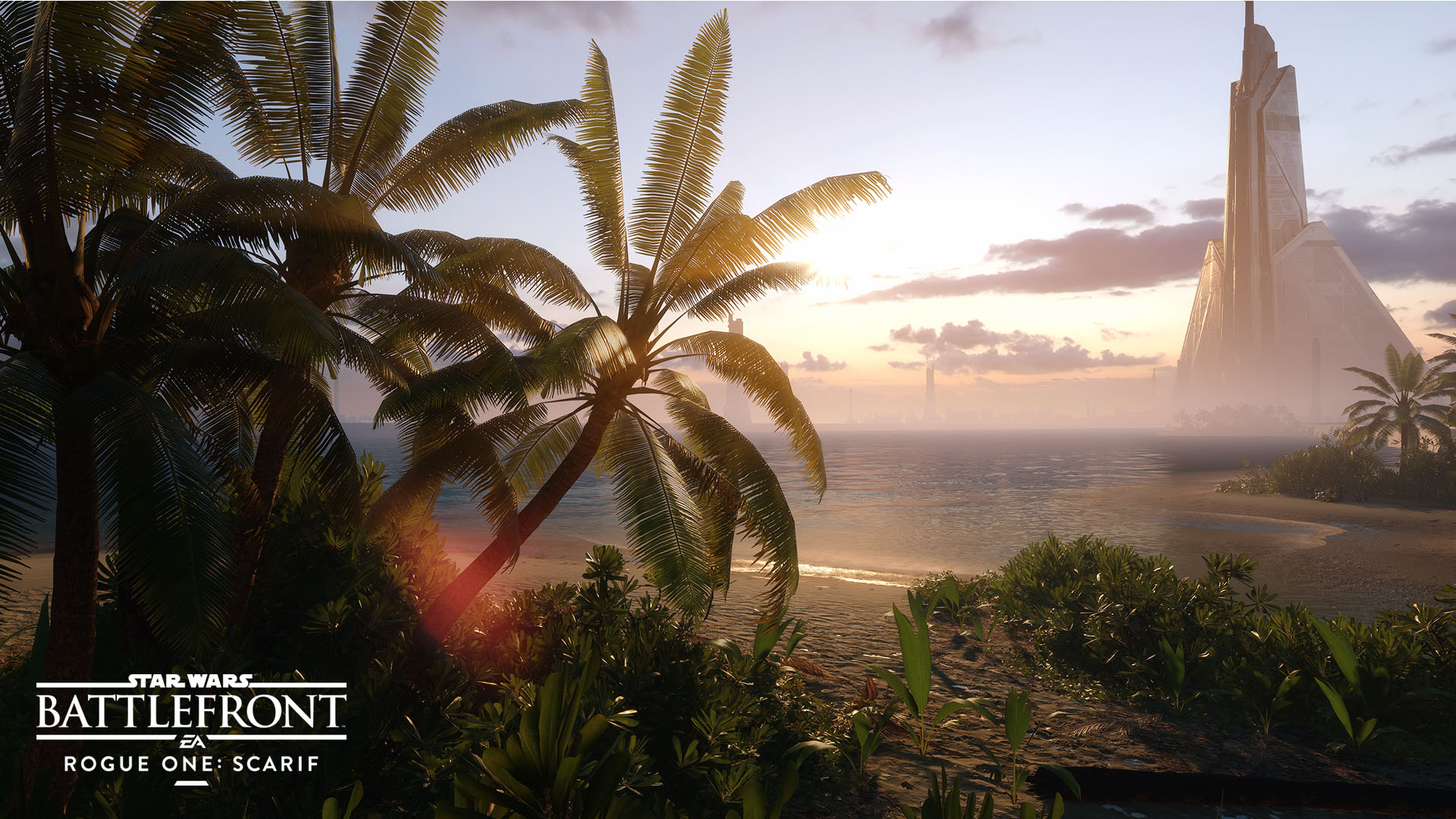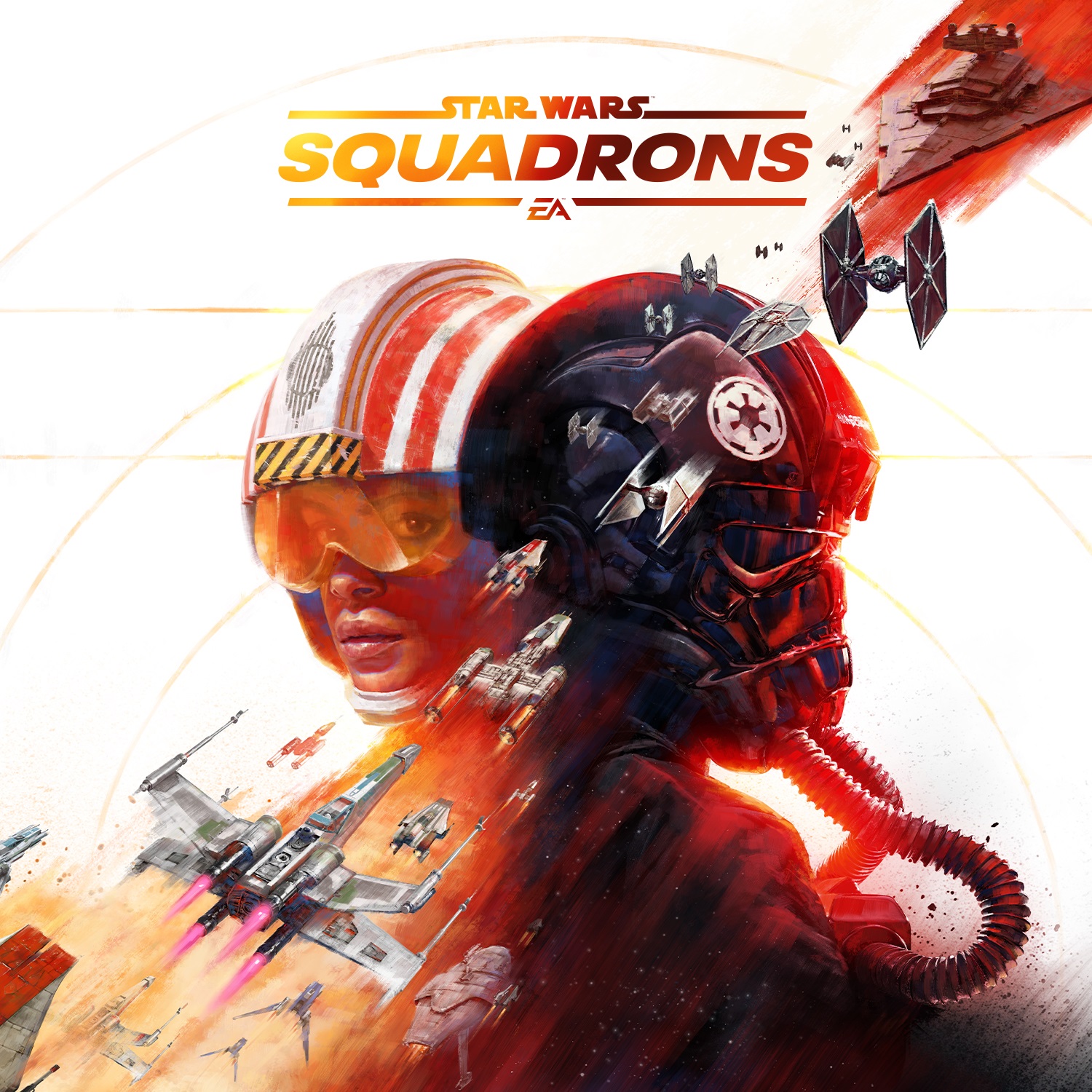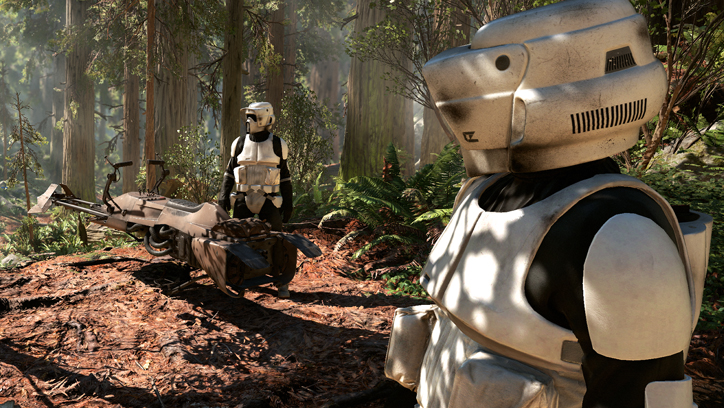
Star Wars: Battlefront is [insert obligatory original trilogy quote and/or reference]. With out of the way, let’s get a few things clear. Firstly, despite the developer namesake, Battlefront is not Star Wars: Battlefield. While the developer has indeed transferred tech and skills from that series, particularly the hybrid of infantry and vehicles including air, they are designed with fundamental differences. And secondly, Battlefront is very much a reboot of the series, straddling the Disney empire’s acquisition of the franchise to start fresh and thus, despite the title, not a direct continuation of the formula, scope, and expectations set by the previous two Battlefront titles.
DICE’s Battlefront is a decidedly more arcade driven formula when compared to the studio’s famed Battlefield, where comparisons will inevitably be drawn, and taking the series in this direction has played to both strengths and weaknesses. Battlefront is an odd beast; at its best a serious contender for the most authentic Star Wars virtual experience a fan could have, and by its own merits a great action game, but at it’s worst a weird hodgepodge of unbalanced ideas and concepts spread too thinly to really shine in one particular area. It’s a simple, exciting game begging for a that extra depth to bring the package together.
Battlefront is designed around pick-up-and-play, offering several fairly unique game modes spread across maps built under the template of four different planets. These modes range from short run-and-gun, wonderfully arcadey battles on smaller maps, to larger scale 20vs20 cinematic battles where you’re tasked with escorting (or destroying) AT-AT walkers or capturing points not unlike Battlefield‘s Rush. And here is where I found the game so polarising. On the smaller modes, such as Droid Run and Drop Zone, simple capture-the-point objectives and an infantry focus allowed for quick, snappy, and exhilarating matches wherein the intensity of firefights never let up and entanglements favour strategic positioning and mobility. These matches exemplified the absolute basics of DICE’s Battlefront, the developers understanding of satisfying weapon feedback and deadly explosions, alongside objectives that kept your moving and attentive.
Walker Assault, on the other hand, seems more content to rest on the laurels of “it’s Star Wars“. I don’t want to be misconstrued; great fun is to be had in Walker Assault. There’s no denying the excitement of tearing up the opposition in an AT-ST, dancing through the skies as an X-Wing, or snapping up a Hero icon and embodying the unlimited powerrrrr of Luke, Vader, and more. All the while working together towards some basic capture objectives. But I also feel this mode is more reliant on providing the “Star Wars” moment to immerse you in ongoings, rather than a carefully balanced and objective diverse experience. Supremacy definitely feels more coherent than Walker Assault, keeping the vehicles and heroes while pushing to capture points in a thrilling ebb-and-flow allowing for a wider range of tactics. Yet even that still operates under strict guidelines of what points you can capture and when. It’s Rush, not Conquest.
Much of this weird imbalance can be attributed to the power-up based distribution of special equipment, vehicles, and heroes. Running over glowing icons will reward you with access to a vehicle, a new power up, or hero offering. And through the course of a match unless you remember what’s where (which I’m fairly certain applies only to vehicles and standard random power ups, heroes pick-ups are random) you’ll rarely be able to formulate a truly deeper strategy of play. A randomised gun turret or proximity mine might be relatively useless to your situation, but a rocket launcher or orbital strike has near universal, devastating usefulness. Battlefront is the kind of game where whoever happens to luck upon the AT-AT power-up will find themselves in the seat of a borderline weapon of mass destruction, effortlessly racking up tens of kills as they lay down heavy blasts and orbital strikes. The same can be said for Heroes.
I’m honestly not sure how they could have balanced this, ensuring they included heroes and vehicles while at the same time avoiding erratic game balance. What we have in Battlefront is something I liken a little to Super Smash Bros, wherein there’s an essence of luck and unpredictability in when and how you’ll acquire these “super powers” or items and potentially change the course of the match. And again; I do not mean to imply this makes Battlefront unenjoyable. But where something like Battlefield encourages deeper awareness of your class role, load-out, and how to best implement goodies scattered throughout the map, Battlefront is more about simply accepting you died three seconds after spawning because some bastard was in the opposition’s AT-AT. And your spawn was bad and you’re surrounded. And going toe-to-toe with the Han Solo around the corner as a lowly grunt with no backup is a recipe for disaster. And map choke-points are inevitable shooting galleries. Battlefront is not impossible to play strategically. It favours positioning, and a bit of patience. But it’ll deliberately put overall match strategy and balance to the side in favour of simply accepting that sometimes the galactic stars don’t align and death is inevitable. It’s a game that rushes head first into the instantly gratifying joy of explosions, blaster fire, Heroes, vehicles, and cinematic moments. At least on the larger game modes, where more factors come into play as all the game components are combined.
On the other hand there is a variety of tools and weapons to equip via a card system that works on cool-downs rather than ammunition. Again going for simplicity, you’ll never have to worry about not having enough shots. All blasters work on a neat overheating system. All grenades can be thrown again once your load out card has recharged. Same goes for other loadout cards like the cycle rifle. Other cards to operate off charges, mostly those that temporarily enhance your build with a bonus, like charging your weapon with ion shots that do a huge amount of damage to vehicles and droids. So some degree of meta strategy is required to appropriately equip your soldier with gear for the chosen game mode and your preferred play style. It’s a little disappointing that like so many shooters these days many cards and really fun equipment, like the game changing jetpack, are hidden behind several levels of grinding. I can understand that starting simple helps people learn the basics before moving on to richer stuff, but at the same time a game so inherently arcade driven would benefit from offering more gear upfront instead of locking it off behind number walls.
Once you’ve got some goodies to play with and a feel for the arcadey play style, Battlefront, regardless of the mode, comes to life. DICE’s advanced Frostbite 3 engine combined with photogrammetry of the real Star Wars props, alongside access to the Lucas Film audio archives, has lead to a simply outstanding production when combined with the action heavy arcadey gameplay that effortlessly sinks into reliving moments from the film. Or fantasy born from the film. Battlefront isn’t ashamed to play on nostalgia, and there’s no denying it works wonders. Running alongside the legs of an AT-AT walker, each of its heavy steps kicking up snow and soil, as you encroach on Rebel territory amidst a hail of blaster fire sounds and looks incredible. Endor’s moon is unbelievably lush, possibly the most convincing forest ever rendered in a video game. Binary sunsets on Tatooine take you back to A New Hope. The ease of sinking into Star Wars fandom moments comes from the aforementioned accessibility and simplicity. Assault Hoth. Capture Endor’s moon. Pit Leia Organa against Darth Vader. Eat TIE Fighters for breakfast via Millennium Falcon blasters. And so on. Battlefront rarely puts pressure the player, due to the simplicity of most of the modes, the multitude of which cater to various tastes and fantasies, and distribution of power-ups, vehicles, and heroes. One minute you’re getting decimated, the next you’re Boba Fett. That’s Battlefront.
I’d be lying if I said I wasn’t worried about longevity. I’m disappointed Battlefront abandon’s Battlefield‘s server browser for vague, ambiguous match making, while hiding my network latency. I don’t know where I’m connecting to, or how my network is performance, and I can’t see which game modes are more populated at whatever time of day or night I’m playing. During recent play I’d instantly find full servers of Walker Assault and Drop Zone, but it took 20 minutes before a full Supremacy match became available and thus playable. I ran about three consecutive matches of full 6v6 Blast (basically Team Deathmatch), with the fourth loosing four of the six opposing players, and the round taking until the end to finally fill up with no server balance to break the 6v2 stranglehold. Perhaps the intention menu and match simplicity was to have players try everything out and not stick to one mode. Try some Blast, then Supremacy, then Droid Run, and so on. But this comes at a cost of some modes feeling like they could have been more fleshed out with stronger balance, design diversity, and map count. For example Walker Assault has a fairly standard and predictable match flow across four maps, with the Endor moon map hilariously skewered in favour of the Rebels. And the idea of not being able to play a particular mode simple because the community is busy elsewhere, without knowing for sure, like the aforementioned Supremacy incident, is worrying in an almost exclusive multiplayer game. These things are impossible to predict, but how stable will Battlefront‘s community be in a couple of months from now? Beyond fantasy pandering, where is the focus? DICE’s Battlefield has several game modes, but they’re all built around the core “Conquest” vision and map design, inviting coherency and consistency in the offerings. Battlefront doesn’t really have that. It’s a lot of modes, with varying map counts and depth. It’s hard to find Battlefront‘s rock that the community will cling to, beyond of course “it’s Star Wars“.
There’s a real concern that DICE spread themselves too thinly here, trying to do too much, pander to too many tastes, too many things without that integral grounding and core idea to bring all gameplay variations together. There’s almost a party-game like vibe to Battlefront wherein it’s a whole bunch of modes and items and equipment and powers and cool stuff mixed together. And it’s all authentically, thematically Star Wars, so that makes it great, but what of the game beating underneath? It’s not a bad game by any stretch of the imagination, but where Battlefield‘s game design is defined and unique, and could be dressed up in any setting or time period and still be distinctly “Battlefield“, Battlefront is a bit harder to lock down in game design, mostly defined by and made immersing due its beautiful source material. Walker Assault is as close as Battlefront gets to something truly distinct and defining of the title, but as said suffers from questionable scope in play depth and content offerings.
Star Wars: Battlefront is ultimately a lot of things. A lot of game modes. A lot of unpredictability. A lot of heroes. A lot of powers. A lot of fantastic, virtualised Star Wars moments that’ll leave your jaw on the floor. And most importantly a whole lot of damn good fun thanks to exciting gun play and gorgeous presentation. It’s also often unfocused, unbalanced, and spread thinly in content and depth. I’m enjoying my time with Battlefront and would like continue doing so. I just hope it doesn’t burn me out too quickly, or worse lose the necessary community momentum before I’m ready to hang up the blaster.
Exciting Action
Authentic Star Wars
Gorgeous Presentation
Identity Issues
Questionable Longevity and Depth

